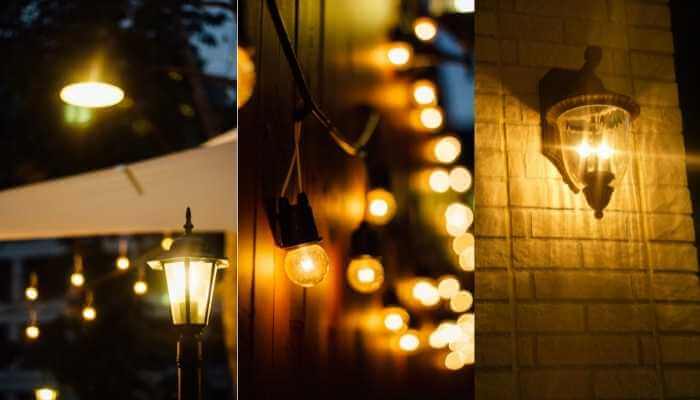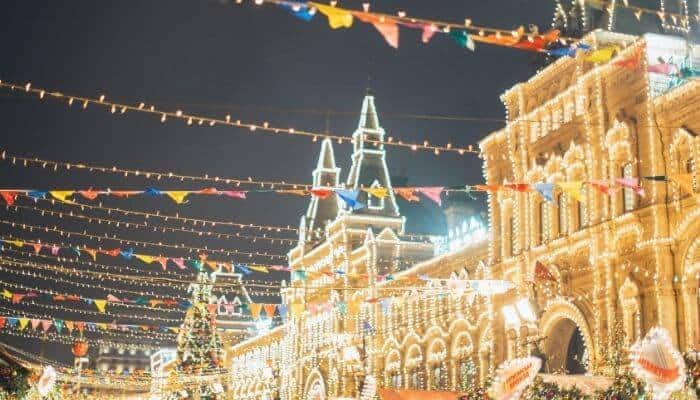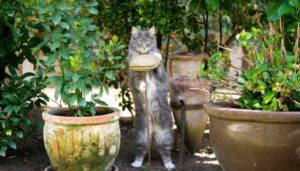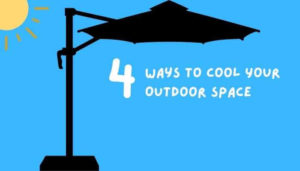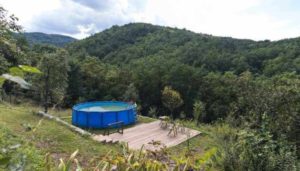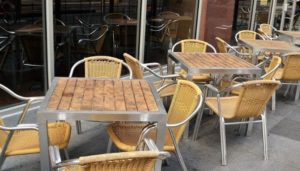I had never seen this question pop up before this week. So as I researched the answer, I was learning something new, too. I’m going to share with you something I find quite interesting that could potentially save you and your plants some stress.
If your solar lights don’t impede on plant roots & are just used for soft lighting, they should be safe for those plants. However, plants have a specific rhythm to their lives; processes dictated by light. So if your lighting is harsh at the wrong times, it will disrupt your plants’ natural rhythm.
What you should really be asking is, “Are ANY lights at night bad for plants?” And the answer to that is – yes. So, let me explain…
How Does Light Affect the Daily Cycle of Plants?
Let’s back up – all the way back to grade school science class. We learned about photosynthesis, remember? It uses the sun’s light to absorb energy via photosynthesis. And each plant needs a different amount of light to thrive – hence the little stakes in seedlings and sunlight guides listed on plants when you buy them.
The most relevant factors of light that impact plants are the intensity of the light they receive, the spectrum of the light they receive, and the duration of the light. And this is important. Because even though the sun provides all of the spectra of light, each portion of the spectra reacts inside the plant’s cells to cause different things.
The red light spectrum, for instance, relates to budding and blooming. Blue spectrum light helps in the growing of fruit and vegetables – providing the construction of more chlorophyll. So there should be an appropriate balance of both.
How Does Solar Lighting or Landscape Lighting Affect Plants?
During the day, plants soak up the light from the sun – visible light – the same as what most landscape lighting emits. This spectrum compromises the color of the rainbow.
Landscape lighting has the same spectrum but can be adjusted to be higher or lower intensity. If your lighting provides too much of one and not enough of another color on the spectrum, your blooms could suffer and your leaves could turn yellow.
When landscape lighting is intense, the plant doesn’t stop producing energy at night. It doesn’t stop growing. This isn’t necessarily a good thing. Extended exposure to light means that the plants in the area don’t get a chance to rest and recoup from any damage they may get from just their ecosystem in general.
Even though solar lighting (and landscape lighting in general) probably isn’t intense enough to damage plants or trees, it can have an adverse effect on them. Think about how plants operate as the seasons change. The amount of sunlight they get usually dictates to them when it’s time to drop leaves if they are deciduous. It also dictates when the plant should go dormant.
Light and heat also tell plants and trees when to prepare for drought, when to close pores, when to bloom, and so many other natural processes. When you introduce artificial heat and light into the plant’s surroundings, it’s possible that these natural processes will be thrown off course or eliminated completely.
There have been cases where deciduous trees were subjected to sunlight during the day and intense spotlighting at night from landscape lighting. The result was that the trees had no process of preparation for winter.
They experienced constant light. So when the cold came, the trees had not dropped all of their leaves, and their pores were not closed. They were damaged by frost and many of them died.
Heat is also an issue, especially in older landscape lighting. When your equipment and bulbs deliver too much heat to the plants nearby, they can die over time.
What Are Things You Can Do to Keep Your Plants Healthy When Using Landscape Lighting?
There are several things you can do to keep your plants healthy while using landscape lighting or solar lighting around them.
LED lights produce less heat and expend less energy. The cost is more expensive up-front, but the bulb does not produce as intense light as halogen and incandescent bulbs or lights produce. Therefore they are better for use near plants if you have worries about the adverse effects of landscape lighting on plants.
You can also choose plants that you put around your landscape or security lights that are tolerant of this kind of lighting. It is often a good idea to can contact your local coop or extension service for a list of local plants, but here are some examples:
- Redbud
- Ginkgo
- Crabapple
- Bradford pear
- Pin oak
Make sure the lights you purchase are LED and of good quality. Some LEDs are actually designed to emit very little ultraviolet or infrared spectrum light. Make sure that the transformer you use will not create too much heat.
Purchase reliable landscaping lights designed to take into consideration the intensity and the spectrum of light it puts out. Or, be careful of how your lights are placed, so that they are not near plants that this light could adversely affect. Every little bit can help keep your plants healthy despite your use of solar or regular landscaping lights at night.



